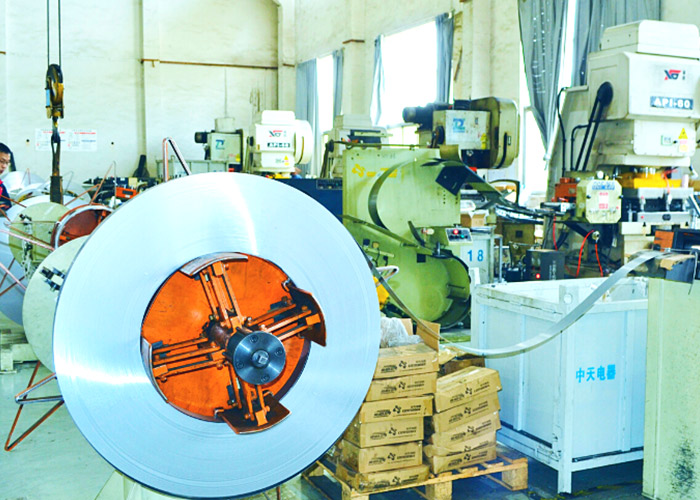EI Lamination for Transformer: The Core of Efficient Power Conversion
- 获取链接
- X
- 电子邮件
- 其他应用
In the realm of electrical engineering, transformers stand as
essential components for power distribution and voltage regulation. At
the heart of these transformers lies the EI lamination, a fundamental
element that plays a pivotal role in ensuring efficient and reliable
operation.
Structure and Design
EI laminations are named for their characteristic “E” and “I” shapes.
These thin, flat pieces of magnetic material, typically made of silicon
steel, are stacked together to form the core of a transformer. The “E”
shaped
lamiations have three legs, while the “I” shaped laminations are used to
close the magnetic circuit. This design allows for a more efficient
magnetic flux path, minimizing energy losses.
Working Principle
When an alternating current (AC) is applied to the primary winding of a
transformer, it creates a magnetic field that alternates in direction.
The EI lamination core, with its high magnetic permeability, channels
and concentrates this magnetic flux. This changing magnetic field then
induces a voltage in the secondary winding, according to Faraday’s law
of electromagnetic induction. The EI lamination’s structure helps to
guide the magnetic flux through the core, reducing leakage and improving
the transformer’s overall efficiency.
Material Selection
Silicon steel is the most commonly used material for EI laminations due
to its excellent magnetic properties. It has a high magnetic
permeability, which means it can easily be magnetized and demagnetized.
Additionally, silicon steel has low electrical resistivity, minimizing
eddy current losses. These properties make it an ideal choice for
transformer cores, as they help to reduce energy consumption and
increase the transformer’s efficiency.
Advantages of EI Laminations
EI laminations offer several advantages in transformer design. Their
simple and modular structure makes them easy to manufacture and
assemble. The stacking of laminations helps to reduce eddy current
losses, as the thin layers limit the flow of induced currents within the
core. This results in lower energy dissipation and higher efficiency.
Moreover, EI laminations are cost-effective, making them a popular
choice for a wide range of transformer applications.
Applications
EI laminated transformers find extensive use in various industries. In
power distribution systems, they are used to step up or step down
voltages for efficient transmission and distribution of electricity. In
electronic devices, such as power supplies, EI transformers are employed
to convert high-voltage AC mains power to the appropriate low-voltage
DC for the device’s operation. They are also commonly used in audio
equipment, where their low magnetic interference and high efficiency are
crucial for high-quality sound reproduction.
In conclusion, EI laminations are integral to the design and
functionality of transformers. Their unique structure, working
principle, and material properties contribute to the efficient
conversion and distribution of electrical energy. Whether in large-scale
power systems or small electronic devices, EI laminated transformers
continue to play a vital role in modern electrical engineering.n

- 获取链接
- X
- 电子邮件
- 其他应用
评论
发表评论